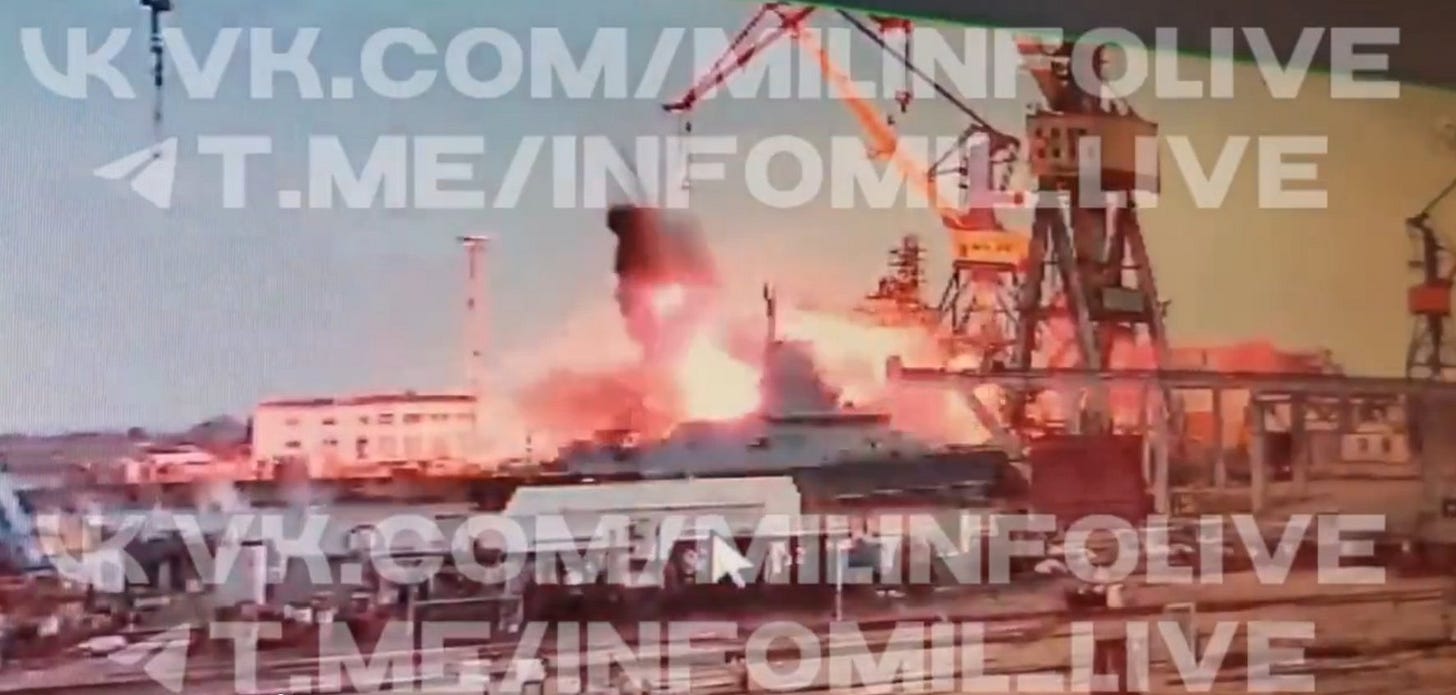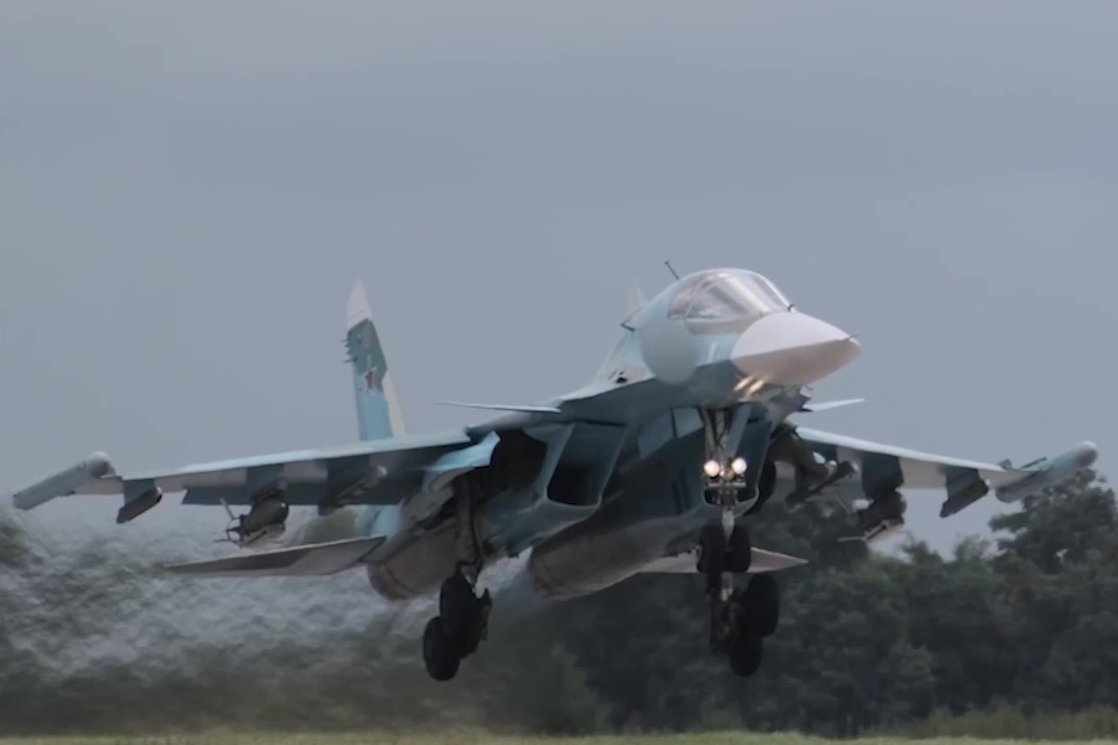Hello everybody!
Amid all the ‘routine work‘ that’s pilling on my desk, I’ve been thinking about what to prepare as ‘next’: finish my ‘air-power update’ (under construction for over a month), or at least a part of it, or go for another ‘frontline update’….? On the other hand, I’m receiving lots of questions – often even about things I thought I’ve discussed a long ago: obviously a result of the number of those who appreciate what I’m posting here constantly growing. Is OK, that’s the nature of things.
Now, sadly, due to my work-related obligations, didn’t manage to finish my next Q&A: indeed, I’ll be away the next few days and thus even the next Don’s Weekly is going to be delayed a bit.
That said, I think it’s not that much of a problem because – although the fighting remains fierce, at multiple sectors of the frontline – the war in Ukraine has slowed down by quite some, the last few days.
In the air, the good news is that through a combination of ATACMs, Storm Shadows/SCALP-EGs, V.880s fired in ballistic mode (that’s the missile of the former S-200/SA-5 SAM-system), and UAVs, the PSU and ZSU continued a systematic ‘drive-off’ of the Russian attack helicopters from southern battlefields. We’ve seen them hitting Berdyansk and other forward operating bases: two days ago they’ve hit Taganrog, too.
Now, please, don’t make a mistake and think this is going to completely neutralise the threat of Mi-28s and Ka-52s. Mind that they can still be dispersed at Taganrog and similar air bases, take off from there, re-fuel and re-arm somewhere closer to the battlefield, and then operate there in almost the usual fashion. The point is that such methods of operations are going to put additional strain upon their airframes, while reducing the time they can spend in action.
Even then, the PSU and ZSU will have to find a way to keep the VSRF under constant pressure, because the moment they run out of ATACMs and other, similar weapons, the VKS is going to return its attack helicopters to forward operating bases closer to the battlefield. And then the entire game will have to be started a new.
Yes, additionally, the ZSU also hit both the ports of Sevastopol and Kerch, damaging several Russian warships and at least one submarine, too. Though, exact details on the damage remain rather evasive.

A lot less good news is that the PSU still has not enough long-range SAMs to make an end with Russian glide-bomb attacks. These are continued at the same rate like through October, when around 1,000 are known to have been released.
Now, somebody asked me: how comes there are claims the Russians to have released, for example, ‘47 glide bombs in 19 air strikes’? How does this work? Isn’t one strike = 1 glide bomb?
Usually, the Russian Su-34s are releasing two (2) glide bombs per strike. Sometimes they release up to four, though. So, the number of strikes flown is actually irrelevant. What is important is that the total of released bombs should be even: if it’s uneven, then one or another bomb failed to separate, or even malfunctioned on release. Happens quite often: the quality of production of the Russian MPK/UMPK kits is very crude, the aircraft are flown very intensively, and thus there are frequent malfunctions.

Finally, everybody is waiting for the next major Russian ballistic/cruise-missile-strike on the Ukrainian power grid. It’s obvious hat the Keystone Cops are patiently ‘saving’ their precious missiles for months, and they must be expected to strike – massively – as soon as the temperatures drop below 0 for several days in succession.
Another reason for growing concern is the reported transfer of long range artillery rockets from North Korea to Russia. Reportedly, not only 2000 commercial containers loaded with ammunition calibres 122- and 152mm, but also KN-23 and KN-24 missiles, plus KN-25 multiple rocket launchers are underway from P’yong Yang to western Russia. At least Ukraine seems to have received additional NASAMS and these are already in operations. Combined with MIM-23 HAWKs and Buk-mounted Sparrows, the PSU’s defences of major cities should be significantly bolstered by now.
At the sea, early this morning, Russia hit a Liberian-flagged merchant with a Kh-31P anti-radar missile, just as the ship was entering a port in the Odesa area. One crewmember was killed, three wounded (guess, the missile went for the weather radar of the ship).
From the battlefields….
‘Generally good’ is that the ZSU continues shooting away 800-1,000 Russian troops a day. This is the rate that’s higher than the average number of troops the VSRF can equip, organise, train and send to the battlefield ‘per day’. Thus, as long as the ZSU continues killing Russians at this rate, the VSRF is losing. Problem: I do not see how to keep this rate that high for longer than one, perhaps two weeks – except the Russians come out to attack, like they’re still doing in the Avdiivka area….and unless somebody in the West finally gets sane enough to provide enough artillery pieces and ammunition for them.
Bakhmut… the last few days, the Russians have managed to make few minor advances in the Berkhivka area: that is, west of it, pushing the ZSU away on both sides of what’s left of the Rservoir there. At least the ZSU continued to make additional, ‘minor’ advances in direction of the Russian defence line between Opytne and Mykolaivka. Sadly, there are no news from the Kurdyumivka area: apparently, the 28th Mech didn’t manage to liberate the place.
Avdiivka…the situation remains tense, especially because all the roads to the Ukrainian garrison inside the ruined town are under repeated Russian air strikes (with glide bombs) and near-constant artillery fire. Thus, alone moving supplies to Avdiivka, and evacuating casualties is highly dangerous. That said, over the last 48 hours, the ZSU repelled some 20 Russian assaults in direction of Stepove, Avdiivka (from the south), Tonenke and Pervomaiske. With other words: this is now a ‘siege’.
Southern Zaporizhzhya….the last few days, ZSU artillery made an outright man-hunt for several of top Russian FPV-pilots. AFAIK, neutralised at least two. Plus the CO of the 810th Naval Infantry Brigade. There are also good news from the Staromayorske area….at least form the Russian side: since days already, the Russians are reporting Ukrainian advances and heavy losses. Official Kyiv is zip-lip about developments there; troops deployed there – too…
Dnipro….the ZSU seems to have secured nearly all of Krynki, and most of Kozachi Laheri, and to be advancing into the eastern edge of Krynki, and the forest south of it. …and the ZSU seems to be advancing from Pishchanivka in western direction. Brought in at least one EW system to block the Russian UAVs, thus enabling forward deployment of own armour and some artillery. Plus established dominance of own UAVs, de-facto isolating the Russian units in the Kozachi Laheri area.
Is a slow, very slow advance, but things are coming forward. Moreover, news of the day is that the ZSU artillery blew up one of major Russian headquarters in this sector, killing at least three important colonels – in addition to a number of lower ranks. This is better news than killing generals: there are lots of (dumb) generals (especially in Russia) and they are easy to replace. But, it’s colonels that are actually running the show: they’re the ones who are realising orders issued by generals. So, the more of them are killed, the better – for the ZSU and Ukraine.
Think, that’s all for today. Special thanks for your continuous support and attention – and see you in about one week from now.





Ukrainian army is full of surprises. One of these is destroying a warship in Kerch, another is crossing Dnipro (1000 or more meters wide) and capturing Kosachi Lahery. I wonder if NATO generals are impressed by such heroic deeds because Jake Sullivan evidently is not. Some people really have blood of a fish. Glory to VSU!
Thank you, have a good “ITS NOT A BREAK” break!